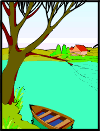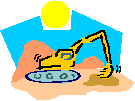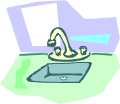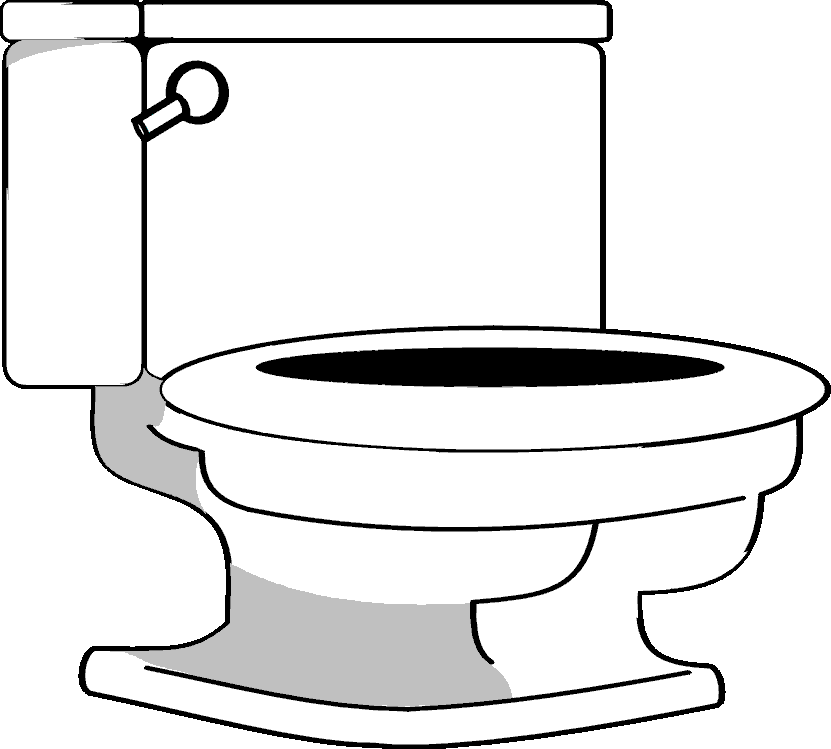 |
|
 |
|
TOTAL SOLIDS
The term "total solids" refers to matter suspended or dissolved in water or wastewater, and is related to both specific conductance and turbidity. Total solids (also referred to as total residue) is the term used for material left in a container after evaporation and drying of a water sample. Total Solids includes both total suspended solids, the portion of total solids retained by a filter (usually with a pore size of 0.45 micrometers), and total dissolved solids, the portion that passes through a filter (American Public Health Association, 1998).
Total solids can be measured by evaporating a water sample in a weighed dish, and then drying the residue in an oven at 103 to 105° C. The increase in weight of the dish represents the total solids. Instead of total solids, laboratories often measure total suspended solids and/or total dissolved solids.
TOTAL SUSPENDED SOLIDS (TSS)
Total Suspended Solids (TSS) are solids in water that can be trapped by a filter. TSS can include a wide variety of material, such as silt, decaying plant and animal matter, industrial wastes, and sewage. High concentrations of suspended solids can cause many problems for stream health and aquatic life.

High TSS can block light from reaching submerged vegetation. As the amount of light passing through the water is reduced, photosynthesis slows down. Reduced rates of photosynthesis causes less dissolved oxygen to be released into the water by plants. If light is completely blocked from bottom dwelling plants, the plants will stop producing oxygen and will die. As the plants are decomposed, bacteria will use up even more oxygen from the water. Low dissolved oxygen can lead to fish kills. High TSS can also cause an increase in surface water temperature, because the suspended particles absorb heat from sunlight. This can cause dissolved oxygen levels to fall even further (because warmer waters can hold less DO), and can harm aquatic life in many other ways, as discussed in the temperature section. (Mitchell and Stapp, 1992; KanCRN website)

The decrease in water clarity caused by TSS can affect the ability of fish to see and catch food. Suspended sediment can also clog fish gills, reduce growth rates, decrease resistance to disease, and prevent egg and larval development. When suspended solids settle to the bottom of a water body, they can smother the eggs of fish and aquatic insects, as well as suffocate newly hatched insect larvae. Settling sediments can fill in spaces between rocks which could have been used by aquatic organisms for homes. (Mitchell and Stapp, 1992; GREEN Hands-On Center website)
High TSS in a water body can often mean higher concentrations of bacteria, nutrients, pesticides, and metals in the water. These pollutants may attach to sediment particles on the land and be carried into water bodies with storm water. In the water, the pollutants may be released from the sediment or travel farther downstream (Federal Interagency Stream Restoration Working Group, 1998).
High TSS can cause problems for industrial use, because the solids may clog or scour pipes and machinery.
Measurement of Total Suspended Solids

To measure TSS, the water sample is filtered through a pre-weighed filter. The residue retained on the filter is dried in an oven at 103 to 105° C until the weight of the filter no longer changes. The increase in weight of the filter represents the total suspended solids.
TSS can also be measured by analyzing for total solids and subtracting total dissolved solids.
Factors Affecting Total Suspended Solids
High Flow Rates

The flow rate of the water body is a primary factor in TSS concentrations. Fast running water can carry more particles and larger-sized sediment. Heavy rains can pick up sand, silt, clay, and organic particles (such as leaves, soil, tire particles) from the land and carry it to surface water. A change in flow rate can also affect TSS; if the speed or direction of the water current increases, particulate matter from bottom sediments may be resuspended. (WATERSHEDSS website)

Soil Erosion

Soil erosion is caused by disturbance of a land surface. Soil erosion can be caused by Building and Road Construction, Forest Fires, Logging, and Mining. The eroded soil particles can be carried by stormwater to surface water. This will increase the TSS of the water body.
Urban Runoff

During storm events, soil particles and debris from streets and industrial, commerical, and residential areas can be washed into streams. Because of the large amount of pavement in urban areas, infiltration is decreased, velocity increases, and natural settling areas have been removed. Sediment is carried through storm drains directly to creeks and rivers.
Wastewater and Septic System Effluent

The effluent from Wastewater Treatment Plants (WWTPs) can add suspended solids to a stream. The wastewater from our houses contains food residue, human waste, and other solid material that we put down our drains. Most of the solids are removed from the water at the WWTP before being discharged to the stream, but treatment canít eliminate everything.
Decaying Plants and Animals
As plants and animals decay, suspended organic particles are released and can contribute to the TSS concentration.
Bottom-Feeding Fish
Bottom-feeding fish (such as carp) can stir up sediments as they remove vegetation. These sediments can contribute to TSS.
Water Quality Standards Regarding Total Suspended Solids
Neither the U.S. Environmental Protection Agency (EPA) or the State of Colorado provide a standard for TSS in drinking water. Colorado Department of Public Health and Environment Water Quality Control Division (CDPHE-WQCD) regulations (5 CCR 1002-31) state that suspended solid levels will be controlled by Effluent Limitation Regulations, Basic Standards, and Best Management Practices (BMPs). (http://www.cdphe.state.co.us/cdphereg.asp#wqreg).
TOTAL DISSOLVED SOLIDS (TDS)
Total Dissolved Solids (TDS) are solids in water that can pass through a filter. TDS is a measure of the amount of material dissolved in water. This material can include carbonate, bicarbonate, chloride, sulfate, phosphate, nitrate, calcium, magnesium, sodium, organic ions, and other ions. A certain level of these ions in water is necessary for aquatic life. Changes in TDS concentrations can be harmful because the density of the water determines the flow of water into and out of an organism's cells (Mitchell and Stapp, 1992). However, if TDS concentrations are too high or too low, the growth of many aquatic life can be limited, and death may occur.
Similar to TSS, high concentrations of TDS may also reduce water clarity, contribute to a decrease in photosynthesis, combine with toxic compounds and heavy metals, and lead to an increase in water temperature ( KanCRN website).
TDS is used to estimate the quality of drinking water, because it represents the amount of ions in the water. Water with high TDS often has a bad taste and/or high water hardness, and could result in a laxative effect.
Measurement of Total Dissolved Solids
To measure TDS, the water sample is filtered, and then the filtrate (the water that passes through the filter) is evaporated in a pre-weighed dish and dried in an oven at 180° C, until the weight of the dish no longer changes. The increase in weight of the dish represents the total dissolved solids, and is reported in milligrams per liter (mg/l).
The TDS concentration of a water sample can be estimated from specific conductance if a linear correlation between the two parameters is first established. Depending on the chemistry of the water, TDS (in mg/l) can be estimated by multiplying specific conductance (in micromhos/cm) by a factor between 0.55 and 0.75.
TDS can also be determined by measuring individual ions and adding them up.
Factors Affecting Total Dissolved Solids
Geology and Soil in the Watershed

Some rock and soil release ions very easily when water flows over them; for example, if acidic water flows over rocks containing calcite (CaCO3), such as calcareous shales, calcium (Ca2+) and carbonate (CO32-) ions will dissolve into the water. Therefore, TDS will increase. However, some rocks, such as quartz-rich granite, are very resistant to dissolution, and donít dissolve easily when water flows over them. TDS of waters draining areas where the geology only consists of granite or other resistant rocks will be low (unless other factors are involved).

Urban Runoff
During storm events, pollutants such as salts from streets, fertilizers from lawns, and other material can be washed into streams and rivers. Because of the large amount of pavement in urban areas, natural settling areas have been removed, and dissolved solids are carried through storm drains to creeks and rivers.
Fertilizer Runoff
Fertilizer can dissolve in stormwater and be carried to surface water during storms, and contribute to TDS.

Wastewater and Septic System Effluent
The effluent from Wastewater Treatment Plants (WWTPs) adds dissolved solids to a stream. The wastewater from our houses contains both suspended and dissolved solids that we put down our drain. Most of the suspended solids are removed from the water at the WWTP before being discharged to the stream, but WWTPs only remove some of the TDS. Important components of the TDS load from WWTPs include phosphorus, nitrogen, and organic matter.
 Soil Erosion
Soil Erosion

Soil erosion is caused by disturbance of a land surface. Soil erosion can be caused by Building and Road Construction, Forest Fires, Logging, and Mining. The eroded soil particles may contain soluble components that can dissolve and be carried by stormwater to surface water. This will increase the TDS of the water body.
Decaying Plants and Animals
As plants and animals decay, dissolved organic particles are released and can contribute to the TDS concentration.
Water Quality Standards Regarding Total Dissolved Solids
 The U.S. Environmental Protection Agency (U.S. EPA) sets a secondary standard of 500 mg/l TDS in drinking water (http://www.epa.gov/safewater/mcl.html). Secondary standards are unenforceable, but recommended, guidelines for contaminants that may cause cosmetic or aesthetic effects in drinking water. High TDS concentrations can produce laxative effects and can give an unpleasant mineral taste to water.
The U.S. Environmental Protection Agency (U.S. EPA) sets a secondary standard of 500 mg/l TDS in drinking water (http://www.epa.gov/safewater/mcl.html). Secondary standards are unenforceable, but recommended, guidelines for contaminants that may cause cosmetic or aesthetic effects in drinking water. High TDS concentrations can produce laxative effects and can give an unpleasant mineral taste to water.
High TDS concentrations in water is also unsuitable for many industrial applications.